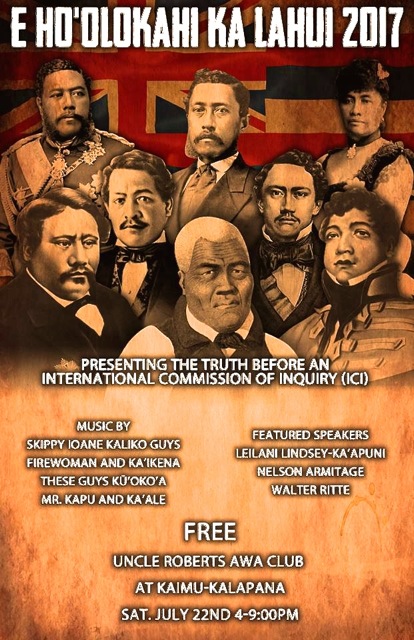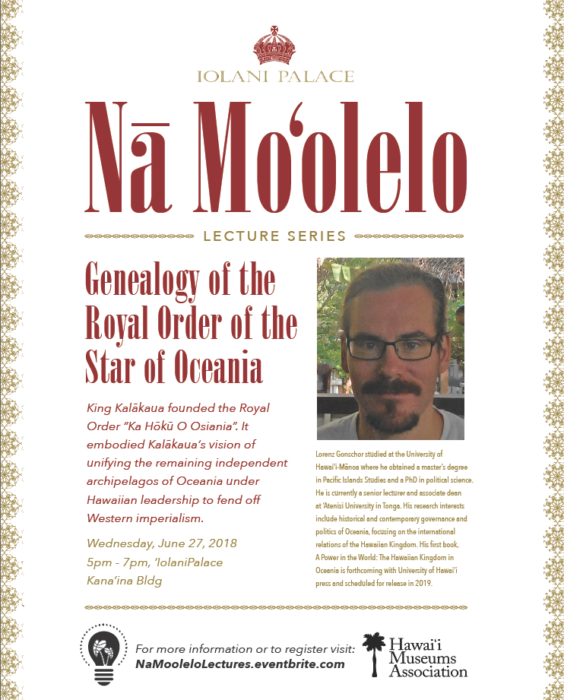
Dr. Gonschor to Present Genealogy of the Royal Order of Oceania
3



November 28th is the most important national holiday in the Hawaiian Kingdom. It is the day Great Britain and France formally recognized the Hawaiian Islands as an “independent state” in 1843, and has since been celebrated as “Independence Day,” which in the Hawaiian language is “La Ku‘oko‘a.” Here follows the story of this momentous event from the Hawaiian Kingdom Board of Education history textbook titled “A Brief History of the Hawaiian People” published in 1891.
**************************************
The First Embassy to Foreign Powers—In February, 1842, Sir George Simpson and Dr. McLaughlin, governors in the service of the Hudson Bay Company, arrived at Honolulu 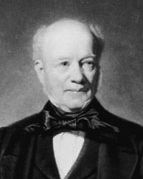 on business, and became interested in the native people and their government. After a candid examination of the controversies existing between their own countrymen and the Hawaiian Government, they became convinced that the latter had been unjustly accused. Sir George offered to loan the government ten thousand pounds in cash, and advised the king to send commissioners to the United States and Europe with full power to negotiate new treaties, and to obtain a
on business, and became interested in the native people and their government. After a candid examination of the controversies existing between their own countrymen and the Hawaiian Government, they became convinced that the latter had been unjustly accused. Sir George offered to loan the government ten thousand pounds in cash, and advised the king to send commissioners to the United States and Europe with full power to negotiate new treaties, and to obtain a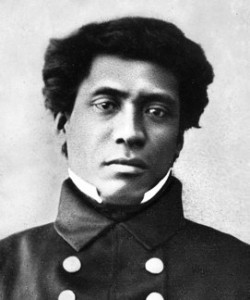 guarantee of the independence of the kingdom.
guarantee of the independence of the kingdom.
Accordingly Sir George Simpson, Haalilio, the king’s secretary, and Mr. Richards were appointed joint ministers-plenipotentiary to the three powers on the 8th of April, 1842.
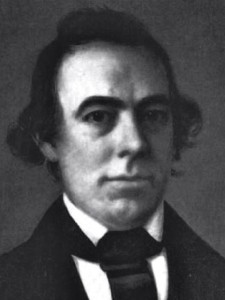 Mr. Richards also received full power of attorney for the king. Sir George left for Alaska, whence he traveled through Siberia, arriving in England in November. Messrs. Richards and Haalilio sailed July 8th, 1842, in a chartered schooner for Mazatlan, on their way to the United States*
Mr. Richards also received full power of attorney for the king. Sir George left for Alaska, whence he traveled through Siberia, arriving in England in November. Messrs. Richards and Haalilio sailed July 8th, 1842, in a chartered schooner for Mazatlan, on their way to the United States*
*Their business was kept a profound secret at the time.
Proceedings of the British Consul—As soon as these facts became known, Mr. Charlton followed the embassy in order to defeat its object. He left suddenly on September 26th, 1842, for London via Mexico, sending back a threatening letter to the king, in which he informed him that he had appointed Mr. Alexander Simpson as acting-consul of Great Britain. As this individual, who was a relative of Sir George, was an avowed advocate of the annexation of the islands to Great Britain, and had insulted and threatened the governor of Oahu, the king declined to recognize him as British consul. Meanwhile Mr. Charlton laid his grievances before Lord George Paulet commanding the British frigate “Carysfort,” at Mazatlan, Mexico. Mr. Simpson also sent dispatches to the coast in November, representing that the property and persons of his countrymen were in danger, which introduced Rear-Admiral Thomas to order the “Carysfort” to Honolulu to inquire into the matter.
Recognition by the United States—Messres. Richards and Haalilio arrived in Washington early in December, and had several interviews with Daniel Webster, the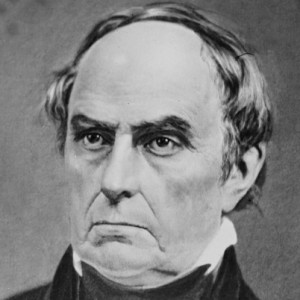 Secretary of State, from whom they received an official letter December 19th, 1842, which recognized the independence of the Hawaiian Kingdom, and declared, “as the sense of the government of the United States, that the government of the Sandwich Islands ought to be respected; that no power ought to take possession of the islands, either as a conquest or for the purpose of the colonization; and that no power ought to seek for any undue control over the existing government, or any exclusive privileges or preferences in matters of commerce.” *
Secretary of State, from whom they received an official letter December 19th, 1842, which recognized the independence of the Hawaiian Kingdom, and declared, “as the sense of the government of the United States, that the government of the Sandwich Islands ought to be respected; that no power ought to take possession of the islands, either as a conquest or for the purpose of the colonization; and that no power ought to seek for any undue control over the existing government, or any exclusive privileges or preferences in matters of commerce.” *
*The same sentiments were expressed in President Tyler’s message to Congress of December 30th, and in the Report of the Committee on Foreign Relations, written by John Quincy Adams.
Success of the Embassy in Europe—The king’s envoys proceeded to London, where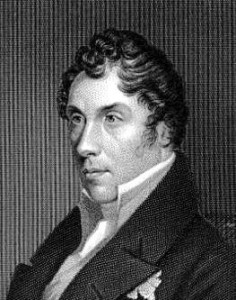 they had been preceded by the Sir George Simpson, and had an interview with the Earl of Aberdeen, Secretary of State for Foreign Affairs, on the 22d of February, 1843.
they had been preceded by the Sir George Simpson, and had an interview with the Earl of Aberdeen, Secretary of State for Foreign Affairs, on the 22d of February, 1843.
Lord Aberdeen at first declined to receive them as ministers from an independent state, or to negotiate a treaty, alleging that the king did not govern, but that he was “exclusively under the influence of Americans to the detriment of British interests,” and would not admit that the government of the United States had yet fully recognized the independence of the islands.
Sir George and Mr. Richards did not, however, lose heart, but went on to Brussels March 8th, by a previous arrangement made with Mr. Brinsmade. While there, they had an interview with Leopold I., king of the Belgians, who received them with great courtesy, and promised to use his influence to obtain the recognition of Hawaiian independence. This influence was great, both from his eminent personal qualities and from his close relationship to the royal families of England and France.
Encouraged by this pledge, the envoys proceeded to Paris, where, on the 17th, M. Guizot, the Minister of Foreign Affairs, received them in the kindest manner, and at once engaged, in behalf of France, to recognize the independence of the islands. He made the same statement to Lord Cowley, the British ambassador, on the 19th, and thus cleared the way for the embassy in England.
They immediately returned to London, where Sir George had a long interview with Lord Aberdeen on the 25th, in which he explained the actual state of affairs at the islands, and received an assurance that Mr. Charlton would be removed. On the 1st of April, 1843, the Earl of Aberdeen formally replied to the king’s commissioners, declaring that “Her Majesty’s Government are willing and have determined to recognize the independence of the Sandwich Islands under their present sovereign,” but insisting on the perfect equality of all foreigners in the islands before the law, and adding that grave complaints had been received from British subjects of undue rigor exercised toward them, and improper partiality toward others in the administration of justice. Sir George Simpson left for Canada April 3d, 1843.
Recognition of the Independence of the Islands—Lord Aberdeen, on the 13th of June, assured the Hawaiian envoys that “Her Majesty’s government had no intention to retain possession of the Sandwich Islands,” and a similar declaration was made to the governments of France and the United States.
At length, on the 28th of November, 1843, the two governments of France and England united in a joint declaration to the effect that “Her Majesty, the queen of the United Kingdom of Great Britain and Ireland, and His Majesty, the king of the French, taking into consideration the existence in the Sandwich Islands of a government capable of providing for the regularity of its relations with foreign nations have thought it right to engage reciprocally to consider the Sandwich Islands as an independent state, and never to take possession, either directly or under the title of a protectorate, or under any other form, of any part of the territory of which they are composed…”
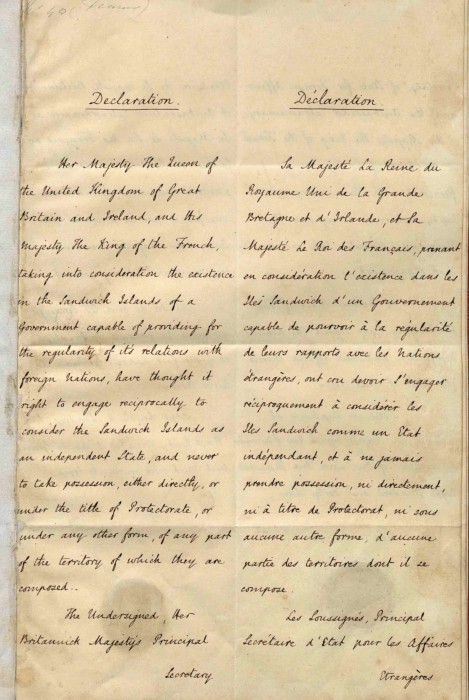
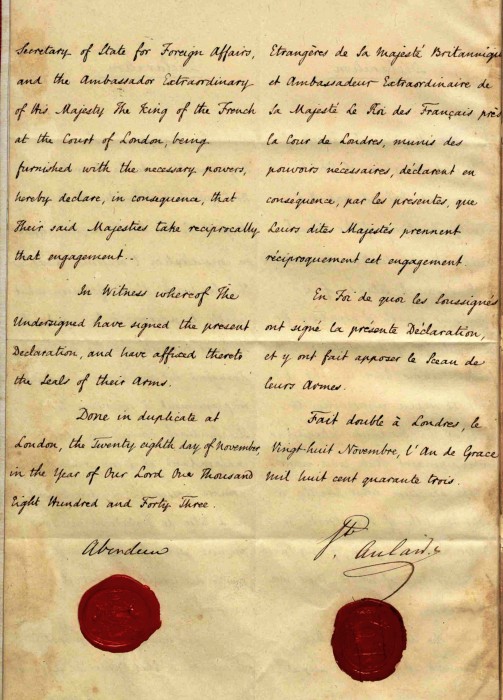
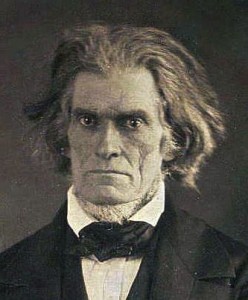
This was the final act by which the Hawaiian Kingdom was admitted within the pale of civilized nations. Finding that nothing more could be accomplished for the present in Paris, Messrs. Richards and Haalilio returned to the United States in the spring of 1844. On the 6th of July they received a dispatch from Mr. J.C. Calhoun, the Secretary of State, informing them that the President regarded the statement of Mr. Webster and the appointment of a commissioner “as a full recognition on the part of the United States of the independence of the Hawaiian Government.”
(BIVN) – In the opening presentation kicking off a two-day Lā Kuʻokoʻa educational conference in Hilo, Dr. Keanu Sai gives a lengthy talk on the Hawaiian Kingdom and the United States occupation.
Sai told attendees about the delay of the first hearing of the International Commission of Inquiry constituted under the Permanent Court of Arbitration in the Larsen v. Hawaiian Kingdomcase, and took some questions at the end. But the bulk of his presentation dealt with what he shows to be an ongoing state of war between the United States and the Hawaiian Kingdom, and the subsequent illegal annexation by Congressional resolution. The information covered forms the basis of Sai’s doctoral thesis and his work at The Hague.
(BIVN) – The first sitting of the International Commission of Inquiry, initially scheduled for January 16 and 17, 2018 on the grounds of ‘Iolani Palace at the Kana‘ina Building, has been delayed.
Political scientist Dr. Keanu Sai, who is also the agent representing the Provisional Government of the Hawaiian Kingdom in the Inquiry that stems from the Larsen v. Hawaiian Kingdom arbitration held at the Permanent Court of Arbitration from 1999-2001, made the announcement during a Lā Kuʻokoʻa educational conference held in Hilo on Saturday.
“We’re gonna probaly have to hold back on the hearing of January 16 and 17, and probably move it to March,” Sai said.
The orginal January hearing dates would have coincided with the 125th anniversary of the American invasion of the Hawaiian Kingdom on January 16, 1893 – which was followed by the conditional surrender of the Hawaiian government by Queen Lili‘uokalani on January 17, 1893.
According to the Hawaiian Kingdom blog:
At the core of these proceedings will be the unlawful imposition of American laws that led to the unfair trial, unlawful confinement and pillaging of Lance Paul Larsen, a Hawaiian subject and victim of war crimes committed against him by the United States through its armed force—the State of Hawai‘i. These war crimes were committed in 1999.
The reasons for the delay seem steeped in international intrigue.
“I gotta be honest,” Sai told the crowd at the Boys and Girls Club gym during the Lā Kuʻokoʻa event, “I always kept thinking ‘how is the United States gonna obstruct these proceedings?’ They’re not gonna just sit there and let it happen, right?”
The Tribunal in the 1999-2001 arbitration concluded that “it could not determine whether the (Hawaiian Kingdom) has failed to discharge its obligations towards (Larsen) without ruling on the legality of the acts of the United States of America – something the Tribunal was precluded from doing as the United States was not party to the case,” the PCA says on its website. Sai says the U.S. was given the opportunity to participate before the Tribunal was convened. The U.S. State Department declined, he said, instead asking to access the records of the PCA proceedings.
“If there was any time that the United States could have stopped these proceedings, it would have been then in 2000,” Sai said. “But they would have to show the Hawaiian Kingdom doesn’t exist as a state. They couldn’t.”
17 years later, and the International Commission of Inquiry – an avenue recommended by the Tribunal in its 2001 award – is about to get underway.
“This is headquarters for Pacific Command. 118 military installations here,” Sai said of the United States. “You’re not just gonna sit down and let this whole things happen.”
As things were moving along towards the first hearings, Sai said suddenly, the Secretary-General of the Permanent Court of Arbitration, Hugo Hans Siblesz, “obstructed the proceedings,” via a letter, saying that entities who are not members of the United Nations “cannot use this court.”
“We were already there!” Sai said, reliving his astonishment. “This case is stemming from the original case.”
Sai and his deputy agents tried to contact the Secretary-General, to no avail. “Something’s happening,” Sai thought. “Number one, that’s very evasive. This guy doesn’t want to talk.”
The events prompted Sai to travel to the Hague, where the Permanent Court of Arbitration is located. But before doing so, Sai looked into the cryptic statements contained in Secretary-General Siblesz’ letter. His research led him to conclude that the Secretary-General “was actually representing the United States and protecting them in these proceedings.”
“The Secretary-General cannot operate outside of the Hague convention,” Sai said. “That means the Secretary-General has just been exposed as an agent for the United States at the highest level of the court. That’s huge. That’s a political bomb, right there.”
The story goes on. “A formal complaint was received – and I can’t say which country”, Sai said, “but we met with an embassy in the Hague and I was received as an ambassador-at-large for the Hawaiian Kingdom, and they acknowledged receipt of a formal complaint against the Secretary-General.”
“We’re gonna take it to another level now,” Sai said. “Now, we’re taking it to all 122 countries,” also known as the Contracting Party states, whose diplomatic representatives comprise the Administrative Council of the Permanent Court of Arbitration. “And we’re also gonna take it to all 193 countries at the (United Nations).”
Sai says the embassy of the country filing the complaint is asking to “keep things bilateral and confidential” for the time being, as negotiations take place at the international level.
Big Island Video News will be posting the entire presentation given by Sai during Saturday’s Lā Kuʻokoʻa educational conference.
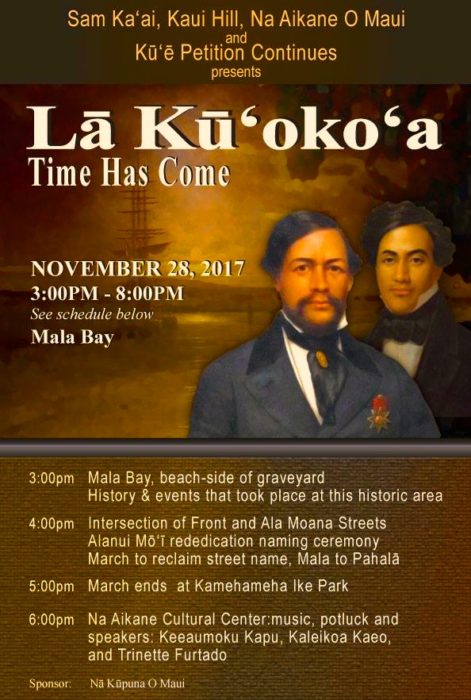

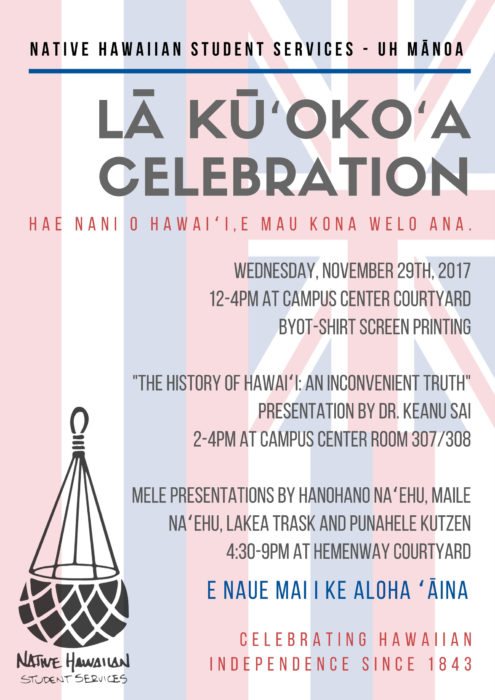
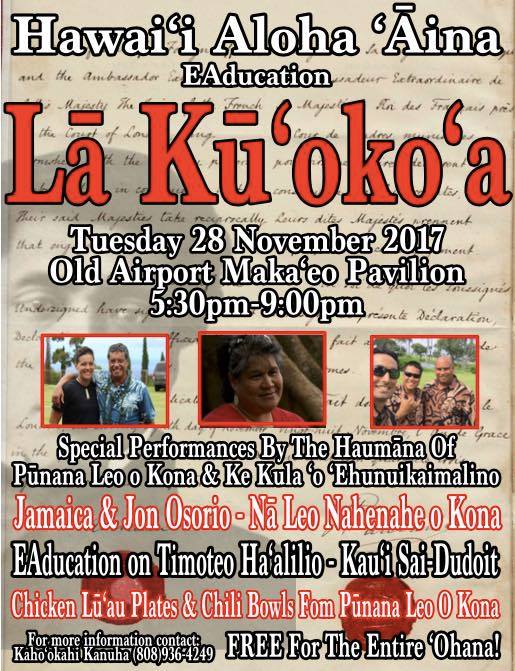
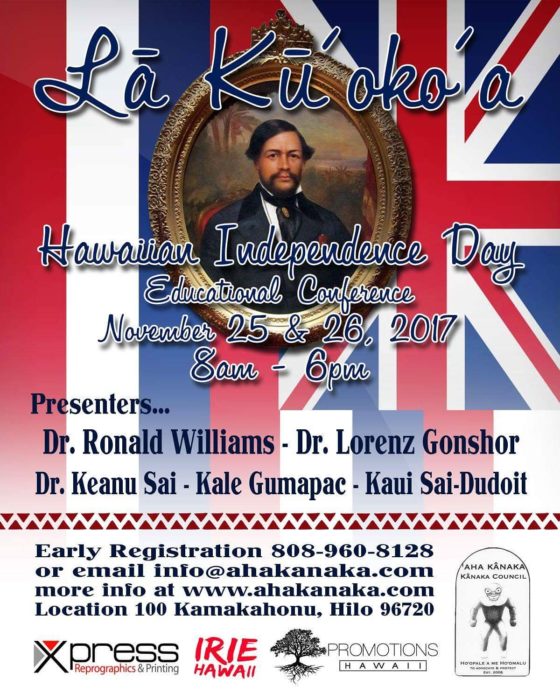

(BIVN) – “This is big,” announced Dr. Keanu Sai in the gymnasium of the Boys & Girls Club in Hilo on Saturday.
Sai, one of several featured speakers in a two day educational seminar organized in celebration of the Hawaiian holiday of La Ho‘iho‘i ‘Ea, was talking about the news that came from the National Education Association’s Annual Meeting and Representative Assembly in Boston, Massachusetts on July 4th.
A group with the Hawai‘i State Teachers Association – the NEA affiliate union representing the public school teachers of Hawaii – successfully convinced the teachers of America to approve New Business Item 37, which stated:
HSTA credited Chris Santomauro, a teacher at Kaneohe Elementary, with introducing the proposal and Uluhani Waialeale, a teacher at Kualapuu charter school on Moloka’i, for presenting an “impassioned and articulate argument in favor of the Hawaiian overthrow measure” which “swayed a majority of teachers from across the country to support it.”
“That’s big. This is not political, this is education,” Sai said as he explained the HSTA proposal to those gathered for his talk in Hilo.
According to Sai, the HSTA Secretary/Treasurer is Amy Perruso, a teacher from Mililani High School. She was one of the first teachers to begin teaching about the illegal overthrow of the government of the Hawaiian Kingdom and the illegal American occupation that followed. Perruso even teaches from Sai’s textbook, Ua Mau Ke Ea—Sovereignty Endures: An Overview of the Political and Legal History of the Hawaiian Islands.
“I pretty much can guarantee you that the teachers that are teaching about Hawaii’s occupation probably came through one of our classes at the University of Hawaii,” Sai said, claiming he had nothing to do with the HSTA’s plan to draw up the agenda item. “That’s the impact right there,” Sai said, “where they are taking their kuleana and maximizing it.”
Ever since Sai’s first trip to the Permanent Court of Arbitration in 2001, where he represented the Hawaiian Kingdom government in the Larsen v the Hawaiian Kingdom case, Sai has made the education of Hawaii’s people his top priority.
Now, inspired by stories like the one of the HSTA in Boston, Sai feels affirmed that “it’s time to go fact-finding.”
“I think the time is right. Let’s enter into an agreement with Lance Larsen, go fact-finding,” Sai said, adding that during the 2001 proceedings before the the Permanent Court of Arbitration, the tribunal “didn’t say you can create the fact-finding within 20 years. It said all it needs is an agreement.”
Sai said two of the arbitrators are now sitting judges on the International Court of Justice.
“So, what we’re going to do is convene the original arbitrators who made the statement to be that Commission of Inquiry,” Sai said. “Because I found out that sitting judges on the International Court of Justice can also serve as arbitrators and commissioners at the permanent Court of Arbitration.”
Commissions of inquiry under the auspices of the Permanent Court serve in a similar capacity as grand juries, Sai told the audience. Commissions of Inquiry not only review sets of facts, but also assign responsibilities regarding these facts. That could be civil liability or criminal liability in international law, Sai said.
To date there have only been five International Commission’s of Inquiry, Sai said. The first was Great Britain and Russia in 1905. The most recent was Great Britain and Denmark in 1962.
“This is not… a happy time, but this is a serious time,” Sai said. “Now, what’s important here is, this agreement which will form three commissioners under the Hague Convention… they will answer the first question. First, what is the function and role of the government of the Hawaiian Kingdom in accordance with the basic norm and framework of international humanitarian law?”
Humanitarian law is the law of occupation and laws of war, Sai said. “Before you can address what is the role of the Hawaiian government during occupation, you have to do that in the light of what happened since 1893. You have to address what the United States did or didn’t do that got us into this situation of possible culpability of the Hawaiian government toward one of its Nationals. Is it our fault that everybody’s brainwashed?
Who’s responsible for that?”
Before the commission can answer that question, they have to “address over a hundred years of non-compliance to humanitarian law,” Sai said. “That’s how it works. Then, in light of all this… what do we do? Are we liable?”
Sai says the commission will also ask, “what are the duties and obligations of the government of the Hawaiian Kingdom toward Lance Larson and – by extension – toward all Hawaiian subjects residing in Hawaii, and abroad?”
“What do we do about Lance Larson? Do we sign a reparation where we now have to pay him?” Sai asked. “Do we report the crimes to the International Criminal Court for prosecution? Where do we go?”
“Let them tell us,” Sai said. “They have the authority. We’re in the procedures. So, I don’t know what they’re going to say. I don’t. Just as I didn’t know what they would say during the proceedings of arbitration. I just know I have to take every step to protect the Hawaiian government. Because we’re in it. We’re now being put to that test.”
Sai added that once the Commission has been convened, they are going to make an important recommendation. “We’re gonna have the hearings in Hawaii,” Sai said, to a round of applause.
“I mean, this is not a political stunt. This is procedural,” Sai said. “Because… back in the year 2000, we entertained whether or not the tribunal could have their hearings in Hawaii. That was under consideration. And, after complete review, we said ‘no, there is confusion at home’. Now, I think our people are ready. They have the knowledge, they have the understanding.”
Sai again pointed to the recent HSTA victory in getting their “illegal occupation” proposal passed at the NEA meeting in Boston.
“Can you now understand,” Sai asked the crowd, “the Commission of Inquiry will probably be looking into these very issues.”
(BIVN) – As a part of the two day La Hoʻihoʻi ʻEa educational seminar held at the Boys & Girls Club in Hilo, Dr. Wille Kauai gives a talk, Understanding the impact of denationalization in the Hawaiian Kingdom.
The presenter delved into the history and issues surrounding nationality, race, and citizenship in the context of the prolonged occupation of Hawaii by the Untied States.

In celebration of the Hawaiian holiday Restoration Day (La Ho‘iho‘i ‘Ea) there will be an educational seminar at no charge held at the Boys and Girls Club of the Big Island at 100 Kamakahonu Street in Hilo from July 29th through the 30th. Individuals who register for the two-day seminar will receive a schedule of the time slots for each of the presenters. Everyone is encouraged to attend the full day of events.
Lunch will be provided by donation. Saturday’s menu is Kalua-pig and Cabbage, rice and macaroni salad. Sunday’s menu is Chili and Rice with Coleslaw. 1 pound containers of Kalua-pig from the Imu will be available for a $12 donation. All donations will be used to offset the cost of the two-day event.

